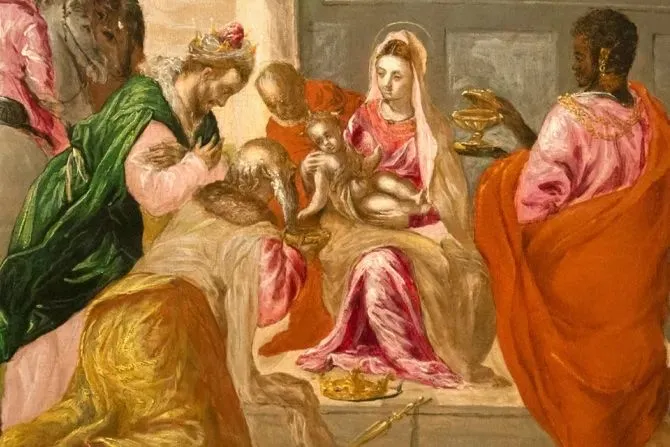St. Matthew, the only one in the Bible who mentions the Magi, explains that they were from “the East,” an area that, for the Jews, was the territories of Arabia, Persia, or Chaldea. The easterners called doctors “magi.”
“Magus” in the Persian language meant “priest,” and precisely the magi (“magoi” in Greek) were a caste of Persian or Babylonian priests. They did not know divine revelation like the Jews, but they studied the stars in their desire to seek God.
Tradition called the wise men “kings” in reference to Psalm 72 (10-11), which proclaims: “The kings of the West and the islands will pay tribute to him. The kings of Arabia and Ethiopia will offer him gifts. “All kings will bow down before him and all nations will serve him.”
This text is currently read in the U.S. Church as “May the kings of Tarshish and the islands bring tribute, the kings of Sheba and Seba offer gifts. May all kings bow before him, all nations serve him.”
5. There could have been more than three
(Story continues below)
St. Leo the Great and St. Maximus of Turin in the fourth and fifth centuries, respectively, speak of three magi, not because this was based on any tradition but perhaps because of the three gifts the evangelist describes.
In the first centuries there are pictorial representations in which two, four, six, and even eight magi appear. However, the oldest fresco of the adoration of the Magi dates back to the second century and is found in an arch of the Greek chapel in the Roman catacombs of Priscilla, and three appear there.
The Three Wise Men would have had material of a prophetic nature (some have suggested that they obtained it from an eastern Jewish community, such as that of Babylon) that allowed them to astronomically identify the birth of the “King of the Jews.”
They may have been especially motivated to see him because at the time it was expected that there would come a universal ruler from Israel.
In his book “Jesus of Nazareth,” Pope Benedict XVI explains: “We know from [Roman historians] Tacitus and Suetonius that speculation was rife at the time that the ruler of the world would emerge from Judah, an expectation that [the Jewish historian] Flavius Josephus applied to [the Roman emperor] Vespasian, thereby finding his way into the emperor’s favor (cf. De Bello Judaico III, 399-408).”
6. The origin of their names, physiognomies, and gifts
The names of the Magi do not appear in the holy Scriptures, but tradition has assigned them some. In a Paris manuscript from the late seventh century they are called Bitisarea, Melchor, and Gataspa, but in the ninth century they began to be referred to as Balthazar, Melchior, and Gaspar.
Melchior is generally depicted as an old white man with a beard representing Europe. He offers the child gold in recognition of the kingship of Christ. Gaspar (also called Casper or Kasper) represents Asia and brings incense representing the divinity of Jesus. Balthazar is usually depicted with dark skin because he comes from Africa. He gives the Savior myrrh, a substance used to embalm corpses and symbolizes the humanity of the Lord.
At the time when the Magi began to be described with these characteristics, there was no knowledge of America. Furthermore, all three refer to the stages of human growth: youth (Gaspar), maturity (Balthazar), and old age (Melchior).
7. The star may have been a conjunction of planets
Several hypotheses have been built around the star of Bethlehem that the Three Wise Men saw. It was previously said that it was a comet, but astronomical studies indicate that it was apparently due to the conjunction in the sky of the planets Saturn and Jupiter in the constellation of Pisces.
Thus, the Magi possibly decided to travel in search of the Messiah because, in ancient astrology, Jupiter was considered the star of the prince of the world, the constellation of Pisces as the sign of the end times, and the planet Saturn in the East as the star of Palestine.
In short, it is presumed that the “wise men of the East” understood that the Lord of the end times would appear that year in Palestine.
It is likely that the Three Wise Men knew some messianic prophecies of the Hebrew people and that is why they came to Jerusalem, to Herod’s palace, asking for the king of the Jews.
This story was first published in 2021 by ACI Prensa, CNA’s Spanish-language news partner. It has been translated and adapted by CNA.








